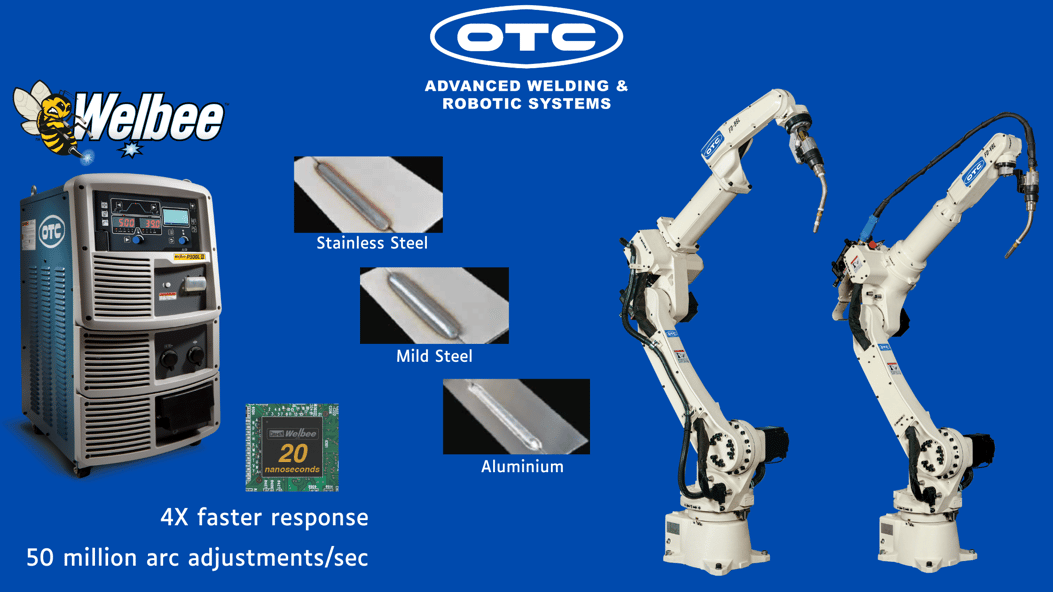
Revolutionizing Weld Quality: Speed, Precision, and Consistency for a Cleaner Future in Welding.
And why they’ll keep winning for years to come.
In welding, "clean" has always meant more than a pretty bead. Today, it’s a mark of excellence. A signal of quality. And increasingly, a competitive advantage.
As welding technology evolves, manufacturers are rethinking what clean really means and how to get there faster, smarter, and with less rework.
Clean starts at the arc
Clean welding begins with arc stability. Whether you're running GMAW on a robotic cell or dialing in TIG for a precision manual job, arc control is foundational. It affects bead profile, reduces spatter, and helps limit heat-affected zones.
OTC Daihen’s digital inverter technology plays a major role here. With advanced waveform control and built-in arc start algorithms, operators and integrators can rely on consistent, low-spatter arcs that reduce cleanup time and post-process waste.
Material prep isn’t optional
Clean inputs drive clean outputs. That’s not just a best practice, it’s now a necessity. Contaminants like rust, oil, or paint introduce instability, increase fume production, and shorten consumable life.
More shops are investing in upstream surface prep and integrated sensors that verify material conditions before the first arc is struck. Whether in a robotic cell or a manual workstation, better prep leads to fewer issues downstream.
Less spatter, less rework
In 2025, no one can afford to spend hours grinding and reworking poor welds. Manufacturers need to move fast, meet specs, and minimize downtime. That’s why more fabricators are turning to automation not just for speed but for consistency.
OTC Daihen’s robotic systems are designed to reduce spatter at the source. With synchronized torch movement, real-time process monitoring, and power sources tuned for precision, they help teams skip the grinder and move straight to inspection.
Integrity you can measure
A clean weld isn’t just about the outside. Internal consistency matters just as much, especially in high-spec environments like aerospace, transportation, and food-grade stainless work.
Through waveform control, adaptive feedback, and tight integration with QA systems, today’s welding technology makes it easier to verify what you can’t always see.
Manual and robotic: Working cleaner together
The myth that clean welding only applies to robots? Long gone. Across industries, forward-thinking shops are bridging the gap between automation and skilled labor. That includes training operators to set clean parameters manually and pairing them with robotics that reinforce those decisions through code.
At OTC Daihen, we don’t see clean as a luxury. We see it as the future. And we’re building the tools to help shops of all sizes get there, whether they’re running one robot or a fleet of thirty.
Ready to cut cleanup, reduce rework, and raise your weld quality?
Let’s talk clean welding strategies that match your operation: www.daihen-usa.com



